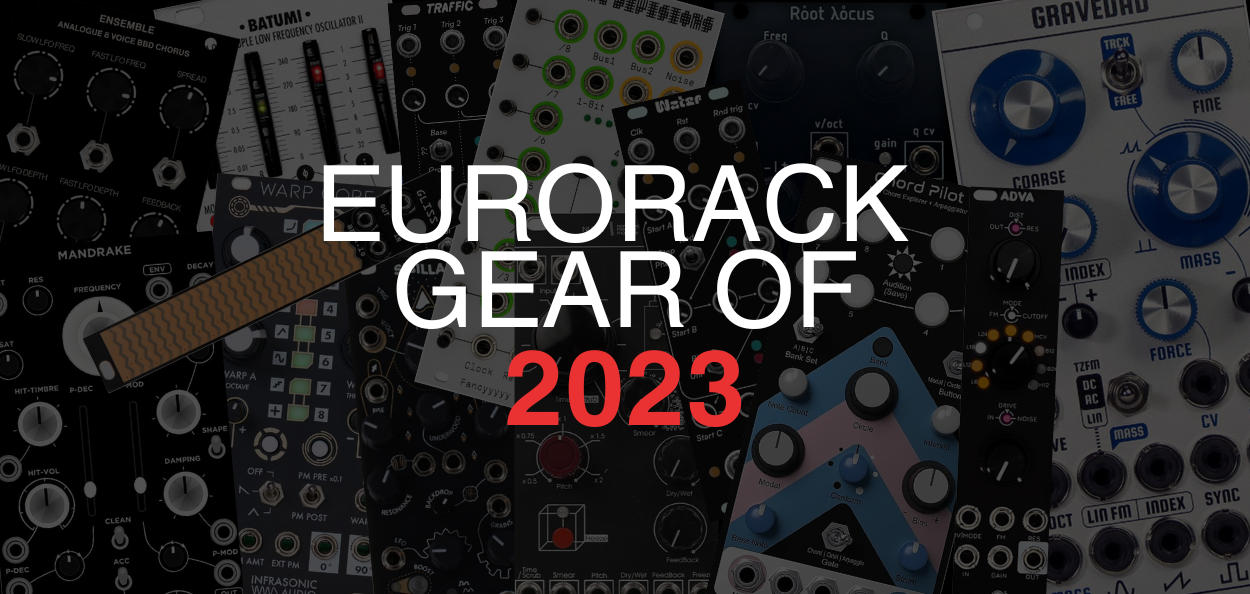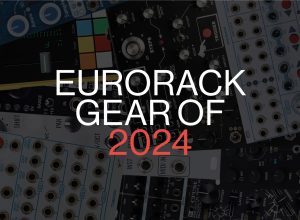While 2023 was a relatively slow year for Eurorack sales, manufacturing capacity finally got back up to speed—thanks, in large part, to the increased availability of components, most of which have finally returned after years of supply chain complications. There was continued progress made towards packing more functionality into smaller footprints—something welcomed by the popularity of smaller cases. It’s also worth noting that this was definitely a big year for Eurorack mixers, of various sizes and from a range of manufacturers—so much so, in fact, that these will likely be part of their own roundup in the near future.
In the meantime, we’ve gathered together some of the more compelling modules to cross our radar this year, mostly arriving from relatively new makers in the Eurorack space. This is by no means a comprehensive “best of” list, but the modules included here are all well worth checking out, and each brings something new to the ever-expanding Eurorack ecosystem.
Olivella Modular Gravedad
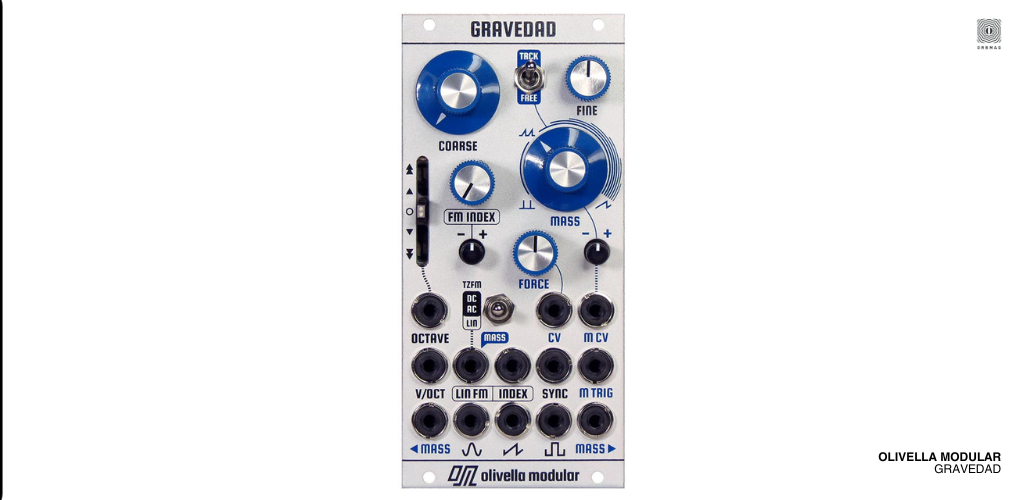
Something of a semi-complex analog oscillator, Gravedad (read: gravity, not zombie dad) by Olivella Modular brings heaps of functionality to its 12HP footprint. In addition to its excellent sounding (and extremely stable, temperature-compensated) sine, saw, and square outputs, you get a stereo sub-oscillator, which can either track the main VCO or self-oscillate, with control over its stereo panning and saturation. Indeed, it’s the latter from where the module gets its name, and which allows for a fantastic amount of experimentation and flexibility. Patching into the sub’s trigger input, for instance, lets it act as a VC clock divider, VC attack-only envelope or audio sub-divider. There’s a SYNC input, as well as a CV-controllable octave slider with a range of five octaves—great for easily exploring dynamic frequency relationships between the oscillators. The linear FM input is normalled to the sub, but also switchable between DC-coupled or AC-coupled thru-zero FM, as well as traditional linear FM. (This is all manipulated through FM INDEX, featuring a dedicated knob INDEX CV input, complete with an attenuverter.) It may all sound like a lot, but the clean interface and aesthetic, fantastic build quality and clever normalizations make this one of the more compelling analog oscillators in recent years.
Malstrom Audio Mandrake
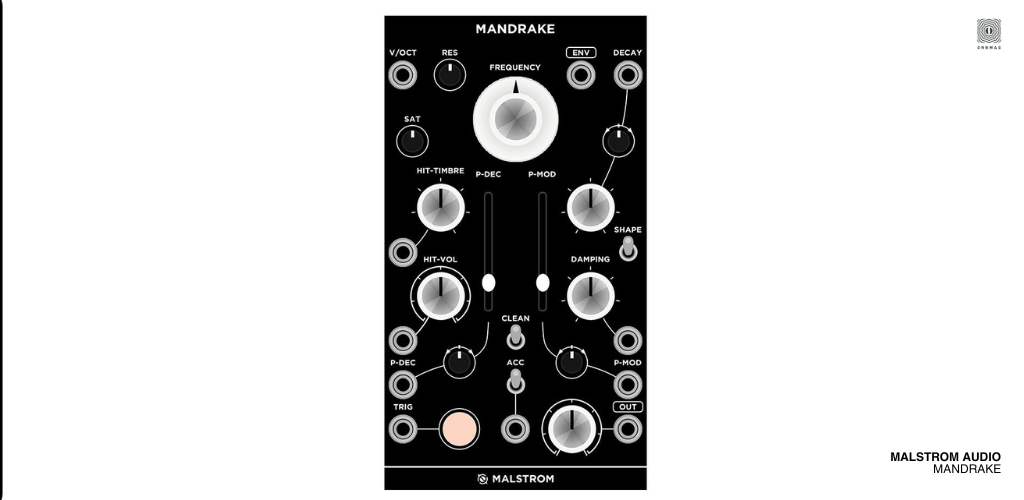
A new kick drum module from a new manufacturer based in the Netherlands, Mandrake by Malstrom Audio is inspired by physical models and based on an original circuit design. Its two main sections are Hit and Body, the former of which comprises a resonating filter with CV-able volume and timbre controls, while the latter features a second resonating filter with control over saturation, frequency and damping. Two sliders in the center of the module provide essential control over pitch modulation and decay, while a handy “clean up” switch eliminates low-end rumble, and introduces a frequency dip at 300Hz. A dedicated trigger button is great for both sound design as well as live use, and conveniently doubles as an LED visualizer for the intensity and decay of each hit. There’s resonance control for the main frequency, a shape toggle to switch between VCA types for the body section, and an envelope output (including a switch on the back of the PCB that lets you choose between this output sending a standard envelope or a ducking envelope, offering very useful versatility in shaping the sound and dynamics of your patch.)
Indeed, Mandrake’s kicks sound great. All of the module’s parameters come equipped with CV inputs and most with attenuators—so while 14hp might seem like a fair bit of space to dedicate to a kick drum, throwing a couple of modulation sources its way allows for an impressively dynamic range of sounds, from snappy clicks to chonky room-shakers. The module’s 1v/oct input lets you to tune and sequence the kick to harmonize with melodic sequences (or effectively use it as a bass synth), while an accent switch allows the accent input to be used either for accentuating specific hits, or to use the VCA control to more precisely and dynamically manage the volume of each hit. Alongside the voltage polarizer Arkan, Mandrake is a superb debut from Malstrom.
Plum Audio ADVA
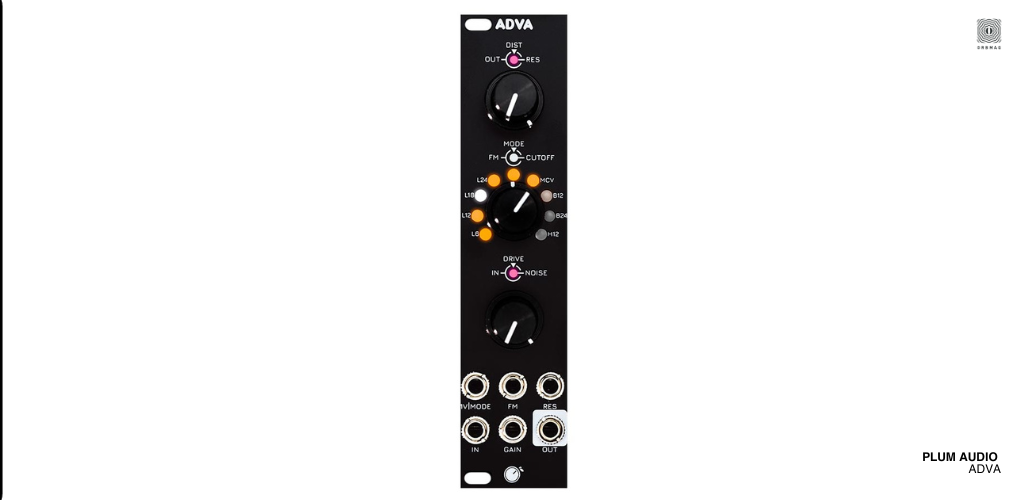
Perhaps the most feature-packed compact filter ever developed, ADVA is about as densely stacked as filter modules get, while still remaining very playable. Within a tiny footprint—that’s conveniently available in either 3U (6 hp) or 1U (22 hp) formats—it boasts seven lowpass, bandpass and highpass filter modes. An onboard loudness compensation circuit keeps the filter sounding exceedingly punchy and full (even when the resonance is cranked up, crucially), while an internal analog white noise generator can be blended with the input signal to add texture and character to any sound. There’s soft-clipping overdrive after the white noise blend to pad out incoming waveforms, as well as a more aggressive distortion just before the VCA if you want to really dirty things up. (Speaking of which, let it be said that having a VCA built into your filter is a very nice thing indeed.) ADVA self-oscillates in all of its filter modes, and its 1v/oct input even lets you use it as a stable, pitch-accurate oscillator. Even the interface feels fresh, with three clickable, custom-designed stacked “knobs inside of knobs”—complete with an RGB LED ring around the center stack, providing visual feedback on your filter mode and cutoff input. Finally, the filter mode can be controlled via CV, which opens up a range of different creative applications. A tiny, flexible and fantastic-sounding filter, that’s also something of an engineering marvel in the Eurorack format.
Infrasonic Audio Warp Core
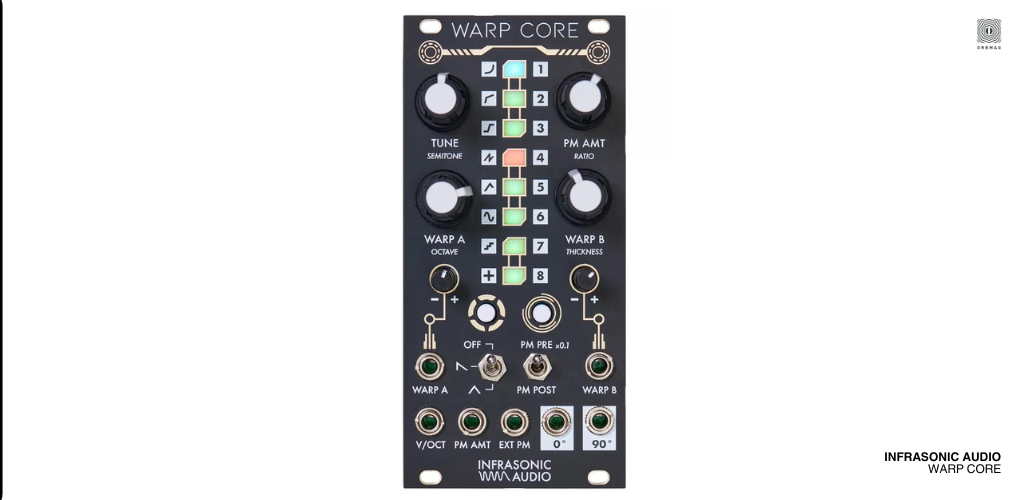
Infrasonic Audio’s debut module, Warp Core is a digital stereo oscillator that takes a rather unique approach. Making primary use of phase distortion synthesis, it’s capable of creating extremely complex waveforms with rich harmonic content, derived from a sine wave lookup table. This is accomplished using eight distinct algorithms within the phase distortion engines, each of which is assignable to two slots arranged in series. Given the predominantly non-linear nature of these algos, each swap of the order instantly yields new and often wild results. In addition to its dual-phase distortion capabilities, there’s both pre- and post-phase modulation via a sine modulation oscillator. This boasts an adjustable frequency ratio to the main oscillator, complemented by an audio-rate phase modulation input for achieving evolving, detailed sonic shapes. Two adjustable “thickness” parameters act as sub-octave generators, along with subtle detuning for stereo/unison sounds. Finally, a clever “tuning lock” quantizer function simplifies oscillator tuning—handy in the studio and for live performance. A distinctive and welcome addition to the world of digital oscillators, which opens up some wild new terrain for sound shaping and unconventional, warping modulations.
Clatters Machines Sibilla
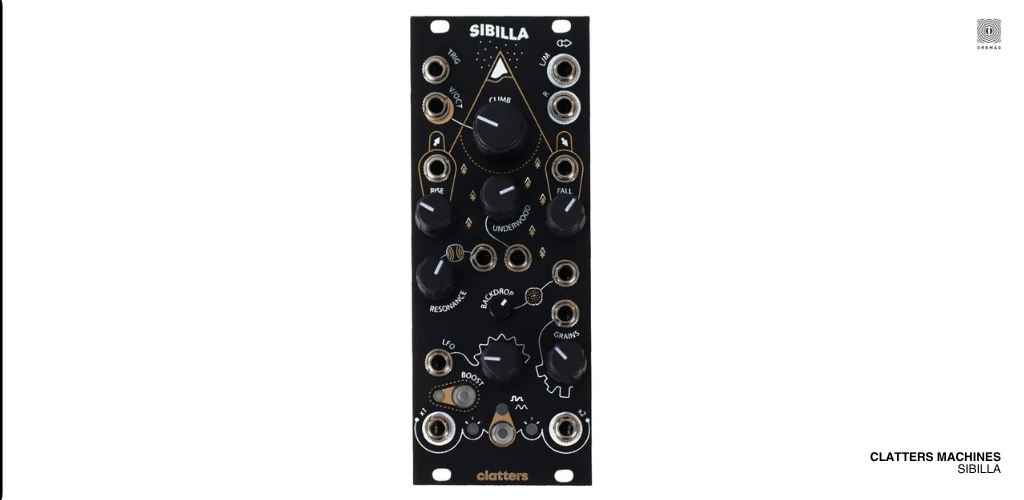
In Clatters Machines’ own words, Sibilla “aims to translate into music the beauty and harshness of a semi-barren mountain.” In more literal terms (and in just 10hp), Sibilla combines quite a lot: a primary oscillator with harmonics, subharmonics, grains, delay lines, and two LFOs—all of which make it a powerful, distinctly digital drone synth unto itself. To dig a bit deeper: Each of the module’s stereo outputs is also the endpoint of a feedback loop, comprised of a primary sine wave oscillator and two additional saw and sine waves, with frequencies influenced by the generation of harmonics (in the right channel) and subharmonics (in the left channel). The waves phase along with fluctuating grains, based on two white noise sources, which run interference alongside two (patchable, modulatable) LFO outputs. These “interferences” run through a resonant low pass filter, and are then distributed to four different delay lines, which are fed back into the audio loops at different timing intervals based on the movements of the grains. Unlike most oscillator modules, it has a trigger input for generating short, plucky sounds when it receives a trig; leave that unpatched, however, and it will go to its happy, droning place. Sibilla isn’t really a module for getting quickly to a particular sound; rather, like the mountainous metaphor above, it provides a vast, digital range of timbres, and is more about a journey through sonic territory.
Knobula Chord Pilot
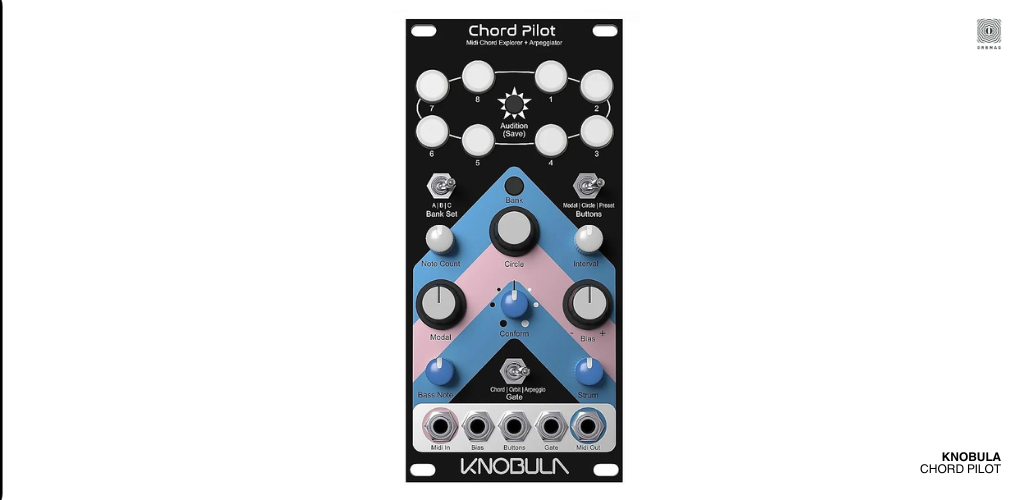
Generating chords in Eurorack can be something of a challenge, and Chord Pilot presents an interesting approach to remedying this problem. It’s essentially an attempt to rethink the process of building and sequencing chords—of which it can store 192, breaking them up into banks of eight. A step sequencer rotates through these groups, and you can then widen the range, spread of the “fingers” on keys, as well as the weighting of notes, intervals and inversions. It can also strum and arpeggiate (in different modes), all inside a compact 12hp package. It’s also a curious addition to the Eurorack ecosystem, in that it only outputs MIDI: this makes it primarily a controller/sequencer for outboard polyphonic MIDI gear—or, to keep things in the rack, for Knobula’s own Poly Cinematic, for which it makes a fantastic partner. (It’s also worth noting that it should work well with any other MIDI-equipped polyphonic module that comes down the pike). Finally, it can also receive notes from a MIDI keyboard via its TRS MIDI input, letting you store, modify, and sequence the chords directly played into it. All in all, Chord Pilot is a unique and idiosyncratic approach to chord generation with knobs and control voltage, and provides a creative platform for plenty of happy accidents.
Bela Gliss
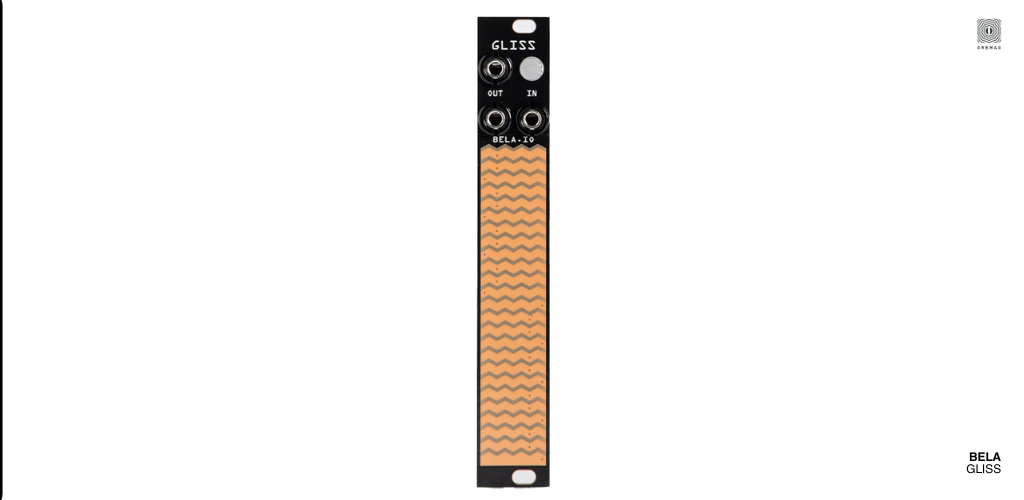
Gliss is a versatile touch controller that offers a wide array of functions: expressive performance control, recording looping modulation shapes in realtime, creating custom envelopes, functioning as a five-note keyboard or step sequencer, and even visualizing and processing external signals. It boasts a single CV input, two CV outputs, a single illuminated button, 24 addressable RGB LEDs integrated behind the panel, and, of course, the touch-sensitive surface. It’s built on Bela‘s own tech for high-resolution position and pressure detection, resulting in a level of responsiveness and interactivity that goes well beyond the “touch strip” technology typically found on a range of modern synthesizers and controllers. It packs a lot of functionality into a compact 4hp footprint out of the box, and it’s worth noting that Gliss is an open-source design, providing ample room for customization and community-driven alternative firmwares. It’s also full of smart and handy touches, like the ability to scale and offset signals, not to mention the nifty inclusion of a second faceplate, which allows the module to be oriented with the jacks on the top or bottom to ergonomically suit various setups. A great debut that’s likely to prove useful in any rack. Watch the Gliss video manual here.
Jasmine & Olive Trees Traffic + Water
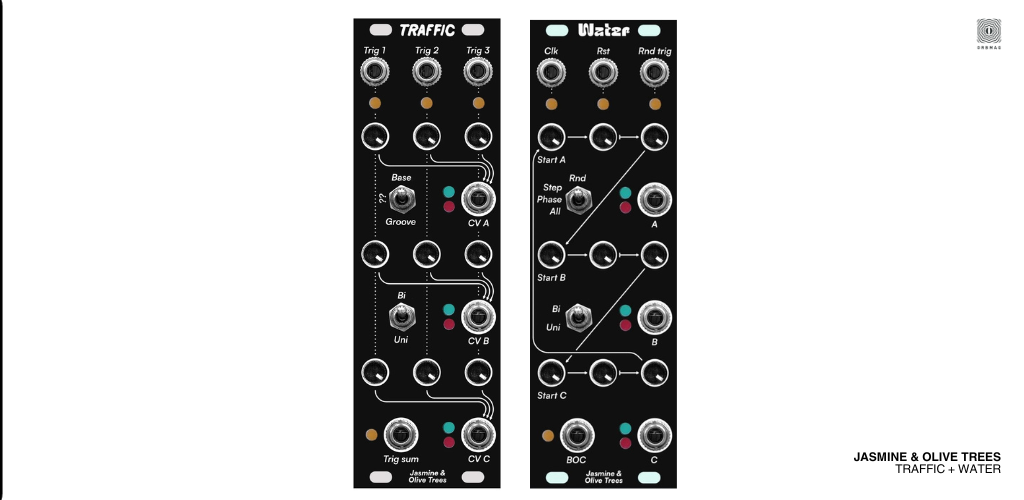
One of the many curious and exciting aspects of using digital sound sources in modular synthesis can be the ability to coax a vast range of distinct sounds from a single source. Traffic takes great advantage of this fact by allowing you to effectively sequence such a source: think digitally-controlled modules with multiple modes, such as Mutable Instruments’ Plaits, Intellijel’s Plonk, and Noise Engineering’s BIA, as some of the more popular examples. By ingesting three trigger sources to specify which sounds are played when, it ends up functioning a bit like a preset selector—the most obvious use case being to sequence three different drum sounds from a single module. Each of the module’s three rows of three knobs has an output for the values of those knobs, letting you dial in the respective parameter settings for when they receive trigger inputs (in descending order of priority, meaning you’d typically order them as kick, snare, and hi-hat). And it’s not just for drums: pretty much any module—including filters, samplers and delays—can be sequenced and modulated in sophisticated ways and with great precision. A couple of very cool random modes offer even more creative flexibility, and the inclusion of an overlay for an alternate firmware called Water transforms the module into a three-phase, eight-step CV sequencer for generating patterns and modulations. A powerful, clever and affordable first module from the Barcelona-based developer, which can add an amazing amount of utility and flexibility to even the smallest of rigs.
Nekyia Circuits Root Locus
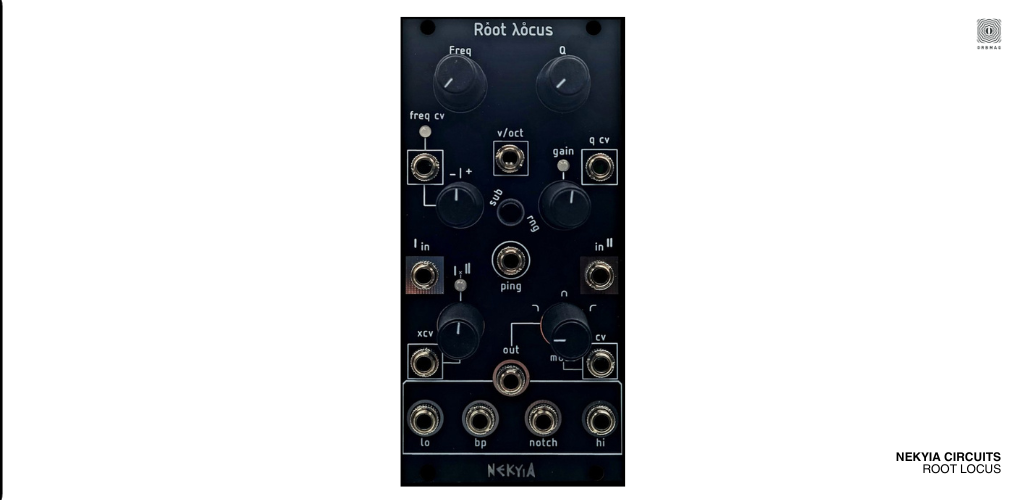
Another killer filter for 2023, and one of four debut modules from Greek manufacturer Nekyia Circuits. Root Locus is a fantastic rendition of a classic, core function: the analog, 12dB/octave multimode filter. In terms of bells and whistles, it packs in a lot of useful, versatile functionality. Root Locus features dual-input, CV-controlled crossfading (complete with gain control!), as well as CV-controlled variable filter mode output—letting you scan between modes without any clicks during switching, also thanks to its internal VCA. The filter is pingable via a dedicated input, making it a great option for creating or layering in percussive sounds as well. Also extremely cool is the fact that the sub range switch effectively transforms the module into a very powerful filter for control voltage, effectively letting it function as a slew limiter, impressively stable quadrature LFO, and much more with a bit of creative patching. It’s worth noting that the analog filter circuit used on Root Locus is based on the CGS512 VCFQ filter, which will be familiar to Serge fans, and it sounds fantastic. There are tons of sweet spots to explore, and resonance can bring it into deeply squelchy acidic territory, while still maintaining a rare degree of sonic savoriness.
Holocene Electronics Non-Linear Memory Machine
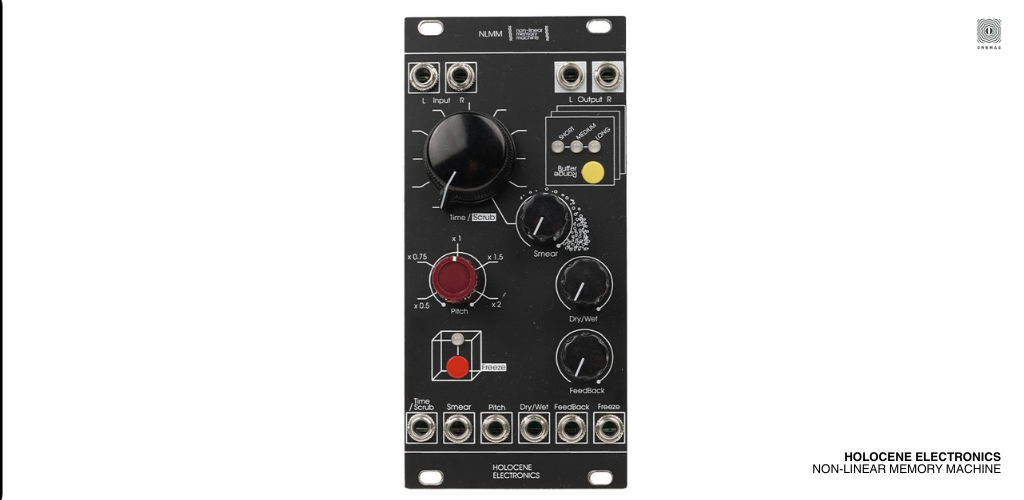
South Korean manufacturer Holocene Electronics’ expressed interest is in combining old and new technologies to create intuitive instruments, and the stereo Non-Linear Memory Machine is its first crack at this mission. The NLMM uses DSP implementations from the 90s and 00s—what with their particular flavors of character and crunch—and is designed to be used primarily as a delay and looper. While many loopers excel when used in a straightforward, linear manner, the NLMM stands out by placing a strong emphasis on the shuffling of its loop buffer; this lets you craft intricate textures and unexpected melodies, alien choirs and spectral soundscapes. By easily being able to tune the pitch of incoming audio by an octave and modulating the time/scrub knob, for instance, it’s incredibly effective for creating a bed of texture for the main sound flowing through it, with skittering landscapes that dance across the stereo field. Whether used in this way or as a more straightforward delay, the NLMM is a module that can liven up nearly any sound, and makes interacting with granular-style DSP an intuitive, screen-free affair.
Fancyyyyy Synthesis Rung Divisions
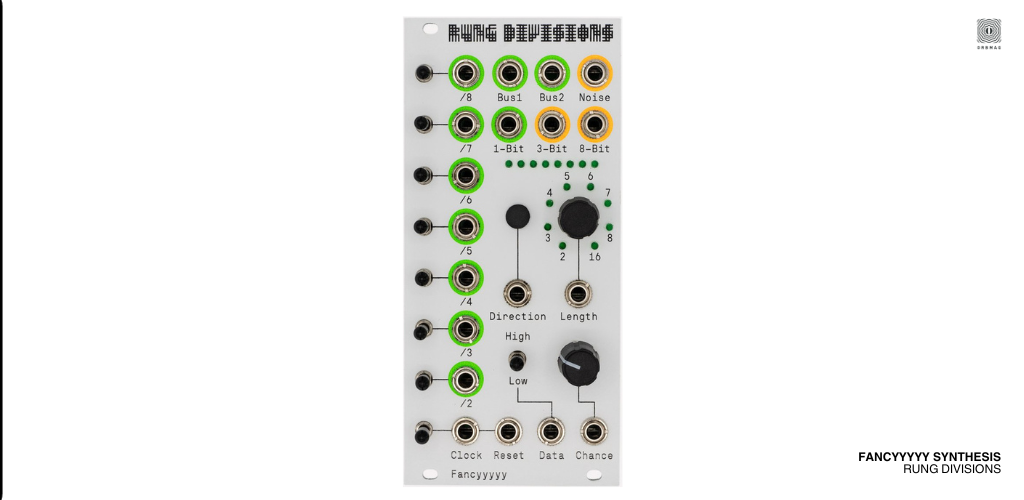
Many years in the making, Fancyyyyy’s Rung Divisions brings its own brand of controlled, Benjolin-inspired chaos to Eurorack. Back in 2018, the module’s first iteration was in fact designed in collaboration with synth design legends Rob Hordijk and Ken Stone. It was an attempt to expand on the infinite complexity of the sequencing and timing outputs of a Benjolin / Rungler in a more tactile manner, and to use a similar methodology to drive a primary clock and random voltage source. This second, beautiful and expanded rendition takes the idea even further; it’s designed around a universal shift register, a “divide by n” pulse divider, an analog noise generator, along with a host of logic and binary operations. Essentially, this means it creates complex, polyrhythmic gates, which drive a looping CV pattern generator. You can CV the pattern direction, length, and looping probability to generate patterns that shift inside and against one another. In layman’s terms (and in its creator’s words), this lets you generate “auditory illusions similar to a stroboscopic effect”—like the visual sensation of a wheel that appears to stand still and reverse direction at high speeds. Everything on Rung Divisions can run at audio rates, making it versatile enough to function as either a complex sequencing tool or a complex noise oscillator. Essentially it packs a ton of elaborate and frankly insane analog logic into a 12hp footprint, and produces an exciting range of sputtering, lurching rhythms, modulations and audio based on what you throw at it. Endless chaos, endless fun.
XAOC Devices Batumi 2
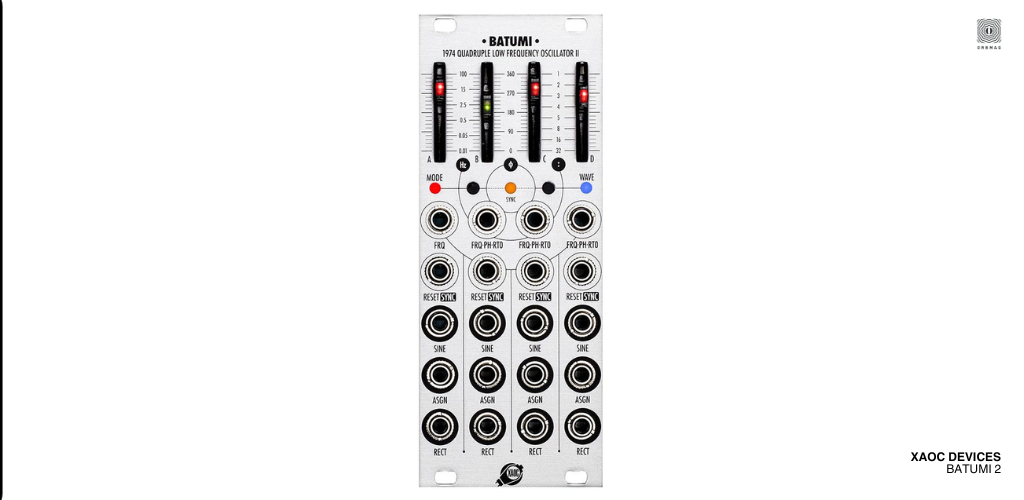
One of the most popular modulation sources in the format, XAOC’s Batumi seamlessly combines quad LFO generators with four operation modes, assignable waveforms, and much more—all into just 10hp. Batumi 2 packs even more functionality into the same footprint, while benefiting from new hardware and software that produces cleaner, anti-aliased and more stable waveforms. These go up to audio-rate, in fact, and any or all of the four channels can even be used as tuned oscillators, thanks to stable 1v/oct pitch tracking (at audio-rate, these also have a surprising amount of modulation and sound-shaping potential). Channels can once again operate either independently or linked, including a new frequency multiplication mode. When synced to an external clock source, each channel’s frequency slider selects a clock division for that channel’s outputs. XAOC has managed to squeeze all the features of the original Poti expander module’s features onto the main Batumi 2 module (i.e. switching sync modes, selecting the assign waveform), opening up the new Poti expander for stuff like per-channel input and output attenuation. There’s even per-channel shape modulation for the LFOs, with switchable destinations.
Morphor Ensemble
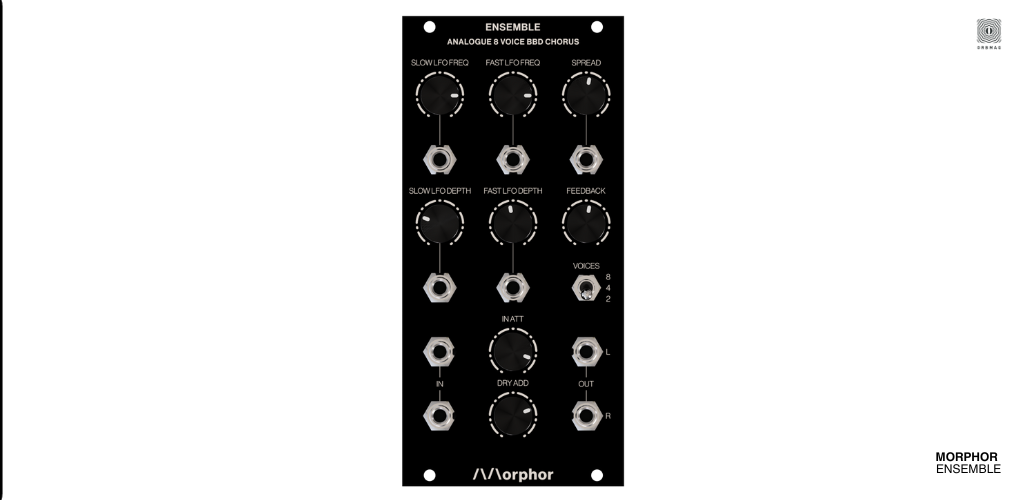
Another relatively new Eurorack maker, the Belgian studio Morphor got its start last year with a Kickstarter campaign for the AP-1, an analogue plucked string sound generator. Morpor has just released a range of four new modules, and Ensemble is its eight-voice, fully analogue, BBD-based stereo chorus effect. In addition to the analogue circuitry, what’s exciting about this one is the direct control over the effect’s parameters: there’s a switch to select the number of voices, as well as CV inputs to control the spread between the voices, as well as the frequency and depth for the onboard dual (slow and fast) LFOs. It feels like more than just a chorus, in fact, and is capable of a range of effects, from subtle widening or chaotic, BBD madness—and lots of strange and compelling territory in between.
